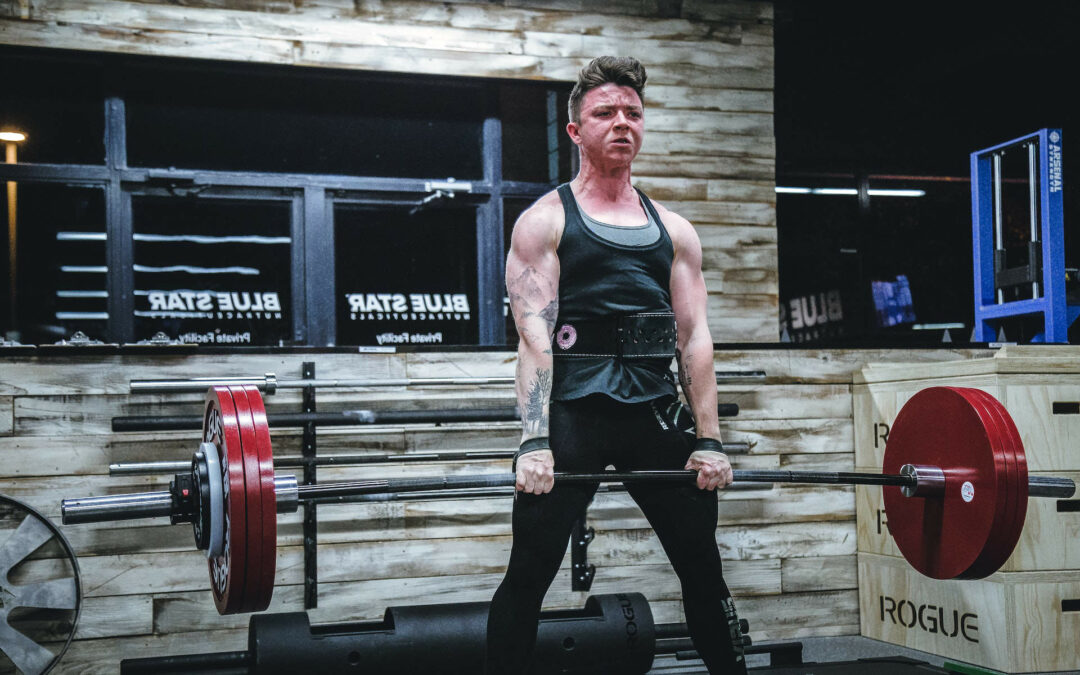
by Dan Johnston | Mar 3, 2023 | Workouts and Exercises
1. Effective Reps
Effective Reps are a relatively new concept in the field of muscle hypertrophy, but they are quickly gaining popularity due to their effectiveness in creating muscle hypertrophy. The theory is that the final reps of a set are the ones that actually cause muscle damage and lead to hypertrophy.
The way to implement Effective Reps is to perform a set to failure, and then take a 10-15 second rest and continue to perform reps using the same weight, repeating this process until you reach a point where you can no longer perform any more reps. These last reps are known as the Effective Reps, and are the ones that allow you to increase the volume of your resistance training to cause an optimal amount of muscle microfiber tears and lead to hypertrophy (optimised with good recovery from decent sleep and good high protein nutrition of course).
Research has shown that Effective Reps can lead to significant increases in muscle hypertrophy. In one study, researchers found that participants who performed Effective Reps saw significant gains in muscle size and strength compared to those who did not (1).
2. One and a Half Reps
1 and a half reps involve completing one full rep followed by a partial rep. For example, in a squat, the athlete would lower themselves down, come back up halfway, then lower themselves down again before completing the full rep. This technique is particularly effective for muscle hypertrophy as it increases time under tension and the number of muscle fibers recruited.
Research has shown that 1 and a half reps can lead to significant increases in muscle hypertrophy. In a study published in the Journal of Strength and Conditioning Research, researchers found that 1 and a half reps resulted in greater muscle activation and hypertrophy compared to traditional training methods (2).
3. Drop Sets
Drop sets involve performing an exercise until failure, then immediately reducing the weight and continuing the exercise. This technique is particularly effective for muscle hypertrophy as it increases time under tension on the muscle, which has been shown to be a key factor in muscle growth. Drop sets can be achieved through a variety of techniques, such as reducing the weight by 10-20% after each set or using a specialized drop set machine.
Studies have shown that drop sets can lead to significant increases in muscle hypertrophy. In one study, researchers found that participants who performed drop sets saw significant gains in muscle size and strength compared to those who did not (3).
In conclusion, these are the top 3 best ways to train a muscle to failure for optimal muscle hypertrophy, which include Effective Reps, 1 and a half reps, and Drop Sets. By implementing these techniques into your training program, you can significantly increase muscle size and strength. Remember to always consult a qualified personal trainer or fitness professional before starting any new training program.
References:
[1] Schoenfeld, B. J., Peterson, M. D., Ogborn, D., Contreras, B., & Sonmez, G. T. (2015). Effects of low- vs. high-load resistance training on muscle strength and hypertrophy in well-trained men. The Journal of Strength & Conditioning Research, 29(10), 2954-2963.
[2] Shimano, T., Kraemer, W. J., Spiering, B. A., Volek, J. S., Hatfield, D. L., Silvestre, R., … & Newton, R. U. (2006). Relationship between the number of repetitions and selected percentages of one repetition maximum in free weight exercises in trained and untrained men. Journal of Strength and Conditioning Research, 20(4), 819-823.
[3] Rhea, M. R., Alvar, B. A., & Burkett, L. N. (2003). Single versus multiple sets for strength: a meta-analysis to address the controversy.
[4] Willardson, J. M. (2007). A brief review: Factors affecting the length of the rest interval between resistance exercise sets. Journal of Strength and Conditioning Research, 21(4), 978-984.

by Dan Johnston | May 1, 2017 | Workouts and Exercises

A weak or painful lower back is often caused by two things:
- Stress from sitting with a poor posture (look at how the muscles are constantly under stress from maintaining a stretched position for long hours)
- Lack of core strength
Most of us know we need to strengthen our core muscles. The problem isn’t that we didn’t know this, it’s actually more the fact that many people aren’t aware of what back exercises you can perform in order to help strengthen your lower back and core. Most of us will know how to work the chest or arms, or how to improve our cardio. But how many Lower Back exercises can you name right now? Be honest, did your list look something like this:
Back Extensions, Deadlifts, Bent Over Rows (or rows in general – these are more focused on the lats and upper back muscles though, but a strong core is needed to perform variations of rows)
…and then you either hesitated and thought about 1 or 2 more, or you’re now kinda stuck with 3 exercises…By the way, there is nothing wrong with these exercises, they’re all good and will help you build a stronger core, so you could start with these. But there are many more exercises available, and this is where Calisthenics can show you creative and effective exercises to help build strength any where, any time and with limited resources (and finances!).
Ok, so as this is only a blog, not a text book, let’s go through this quickly. What do the lower back muscles do? Here is a quick breakdown:
- There are three types of back muscles that help the spine function. These are extensors, flexors and obliques.
- The extensor muscles are attached to the posterior (back) of the spine and enable standing and lifting objects, and extension (bending backwards).
- The flexor muscles are attached to the anterior (front) of the spine (which includes the abs) and enable flexing, bending forward, lifting, and arching the lower back.
- The oblique muscles are attached to the sides of the spine and help rotate the spine and maintain proper posture
So this description gives us a clue into how we can organise our lower back strength training. Extension, Flexion and Rotation – you need to work all 3 in order to strengthen your core (which includes the lower back). On Saturday we performed exercises in the transverse plane (rotation). If you struggled with transverse exercise you already know your core, particularly your obliques, need strengthening.
Here is a break down of both Calisthenic and standard weight training exercises you can do for each of the three muscle types. Try to do a few of these isometrically too:
Extensors:
- Hyperextension
- Reverse leg raises
- Supermans (looks like a reverse V up)
- 1 arm 1 leg supermans
- Bird dogs
- Deadlifts
- Inverted hanging reverse leg raises (needs a pull up bar, or perform in a handstand)
- Planks
- Front and back levers (if you’re good at pull ups)
Flexors:
- Full sit ups (remember hold the imaginary ball)
- Leg raises (hanging and lying)
- Ab twists or Holds
- V ups
- Planks
- Front and back levers (if you’re good at pull ups)
Obliques:
- Twisting planks
- Sit ups with twists
- Ab twists
- Twisting push up
- Planks with cross body knee tucks and cross body knee raises
- Twisting leg raises
You’ll notice some of these exercises strengthen more than one muscle type. That’s because the core muscles all work together. Just remember, when constructing a core workout, consider these elements:
- Different planes of motion (frontal, sagittal, and transverse)
- Twisting, extension, flexion
- Adding weights or resistance where possible (resistance bands are great for this)
- Performing exercises isometrically for as long as possible
by Dan Johnston | Oct 23, 2014 | Workouts and Exercises
Calisthenic athletes know how to utilise this in order to achieve strength which gives them solid core muscles, upper ad lower body strength to perform movements such as these (see video)
For me, creating strong muscles and training those muscles for endurance is far more beneficial than muscle size – not to mention much less expensive for my food bill! Seriously, could you stomach kg’s of egg whites, chicken breasts and tuna everyday??? It’s just not realistic to be able to keep up with that diet and still enjoy life (in my opinion). Increasing your protein intake is important of course, but not so much that it’s burning a hole through your wallet. Plus there are so many foods which are highly nutritious, full of protein, delicious, and add variety and colour to your plate. I’m a huge fan of leafy greens, fruit and colourful vegetables, and I enjoy them most in their natural raw state. Simple dishes like chicken breast, kale, spinach and red pepper, lemon and blackpepper salad, maybe with a few nuts and seeds, even some cinnamon to give a little sweetness (i love cinnamon!) – for me, that’s what I go for.
Here’s an interesting fact on one of the worlds most successful Calisthenics athletes – he’s a vegan! So where does he get the protein from to fuel his recovery? Find out here: https://www.youtube.com/watch?v=BQ9sfVsBbS8
What’s your opinion? Got some great diet or training tips you want to share? Got a question? If you’re reading this then GET INVOLVED and I’ll post it out in our newsletter next week!

by Dan Johnston | Oct 8, 2014 | Workouts and Exercises
My kitchen floor isn’t carpeted so it has a slippery floor – an ideal surface for bodyweight exercise!
Here’s what I do:
1. I take a large tea towel and fold it in half.
2. I get on my knees, put the folded towel down in front of me, and place both hands on the towel
3. I start pushing the towel forward with my arms straight out in front of me, keeping my knees in the same place and lean forward
4. I go as far forward as I can without letting my body touch the floor (trying to go as flat as possible)
5. I then use all my strength to slide the towel back towards my body whilst maintaining straight arms.
6. I then repeat until I cannot do anymore!
This is an intense move, but anyone can do it! Just start small, only going as far forward as you can and keep practicing that, whilst trying to push further forward each time. You’ll get to the point where you can go completely flat (and not letting your body touch the floor) sooner than you think.
If you’re not sure how this works then ask me after the class on Saturday and I’ll happily show you. If your kitchen floor has carpet then you can still do this move. You just need something that slides across the carpet (oven tray?).
Give it a try and let me know how you get on.


